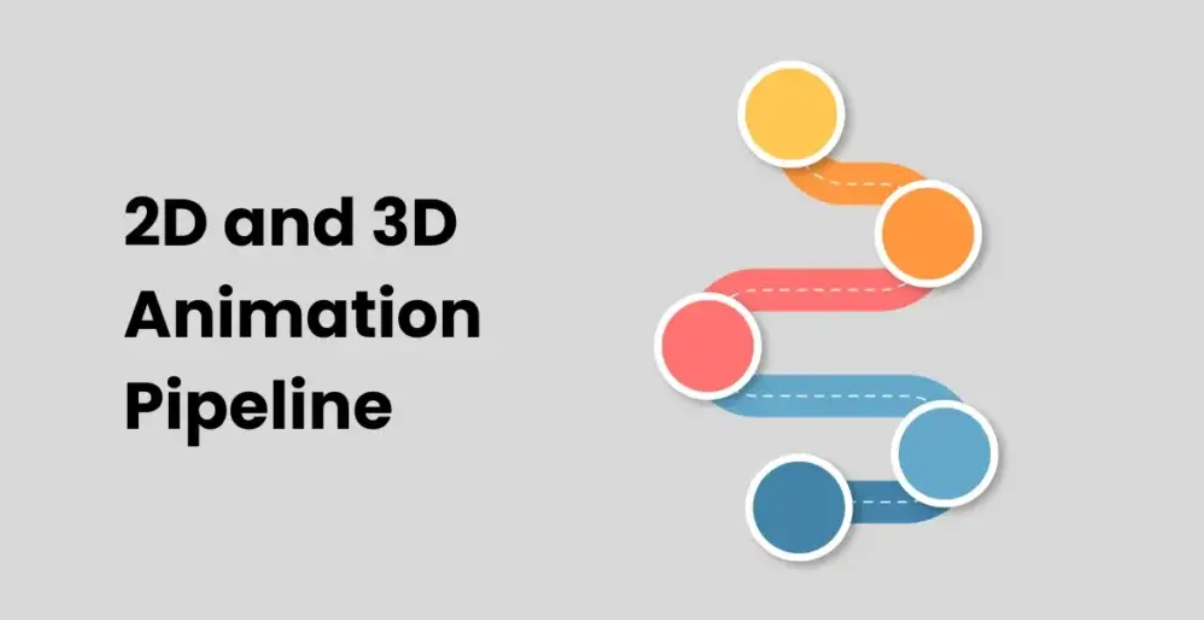2D and 3D Animation Pipeline: Best Guide Step By Step

Animation succeeds when creative vision meets a disciplined pipeline. Whether you work in 2D or build worlds in 3D, understanding each stage of production keeps projects on time and ensures consistent quality. This guide walks you through a clear, practical pipeline for both 2D and 3D animation so you can plan, produce, and deliver strong animated content.
Pre-production: idea to blueprint
Start with concept and script. Define story beats, characters, and the emotional arc. Create storyboards that map shots and timing. For 3D animation projects, develop an animatic — a timed storyboard with temporary sound — to lock pacing early. Design sheets, color keys, and style guides belong here. Decisions made in pre-production prevent costly rework later.
Asset creation: characters, props and environments
In 2D, artists produce clean key drawings, in-betweens, and background paintings. For 3D animation the asset phase includes modeling, UV unwrapping, and texturing. Modelers build the mesh, texture artists create surface detail, and look development artists test materials and shaders. Keep assets organized with naming conventions and version control.
Rigging and setup
Rigging transforms static models into animatable characters. In 2D, this might be a cutout rig or peg-based puppet system. In 3D animation, riggers build skeletons, control rigs, and deformation systems so animators can pose characters naturally. Test rigs early to catch issues with topology or joint influence.
Layout and blocking
Layout sets camera angles, staging, and basic scene composition. Block key poses to establish silhouette and timing. In 3D animation, layout also positions lights and cameras by rough values so the director can approve composition before detailed work begins. Strong blocking saves time in refinement.
Animation: polish from rough to final
Start with rough passes to find the performance, then move to spline polishing and refined timing. Focus on acting, weight, and arcs. For 3D animation, work through keyframe passes — blocking, splining, refining, and polishing. In 2D, progress from key drawings to clean-up and in-betweens. Maintain consistent frame rates and playback frequently to spot flow problems.
Simulation, effects, and cloth
Add physics simulations, particle effects, and cloth where needed. In 3D animation pipelines this often involves caching simulations early and ensuring they integrate with animation. In 2D, effects artists paint or composite hand-drawn effects or use software-driven tools to simulate physics.
Lighting and rendering
Lighting establishes mood and readability. In 3D, light setups and material tweaks can dramatically change the final image; render tests are essential. Optimize render passes and consider using AOVs (arbitrary output variables) to separate elements for compositing. In 2D, color corrections and lighting passes can be painted or composited to simulate depth.
Compositing and post-production
Combine rendered layers, color-correct, and add motion blur and depth of field in compositing. Integrate effects, matte paintings, and background plates. Edit sound design, dialogue, and music to sync with animated performance. Deliver final masters in required codecs and versions for distribution.
Pipeline management and best practices
Use version control, naming conventions, and asset libraries. Maintain a shot tracker and clear handoff notes between departments. Automate repetitive tasks with scripts and batch processes. Regular reviews and playblasts keep the team aligned and prevent late surprises.
Conclusion
A reliable pipeline transforms creative ideas into polished animation efficiently. Whether producing stylized 2D shorts or photoreal 3D animation features, the same fundamental stages apply: pre-production, asset creation, rigging, layout, animation, effects, lighting, and post. Plan deliberately, test early, and iterate with discipline to deliver better, faster, and with more control. Embrace collaboration to elevate every project outcome.
- Art
- Causes
- Crafts
- Dance
- Drinks
- Film
- Fitness
- Food
- Games
- Gardening
- Health
- Home
- Literature
- Music
- Networking
- Other
- Party
- Religion
- Shopping
- Sports
- Theater
- Wellness
